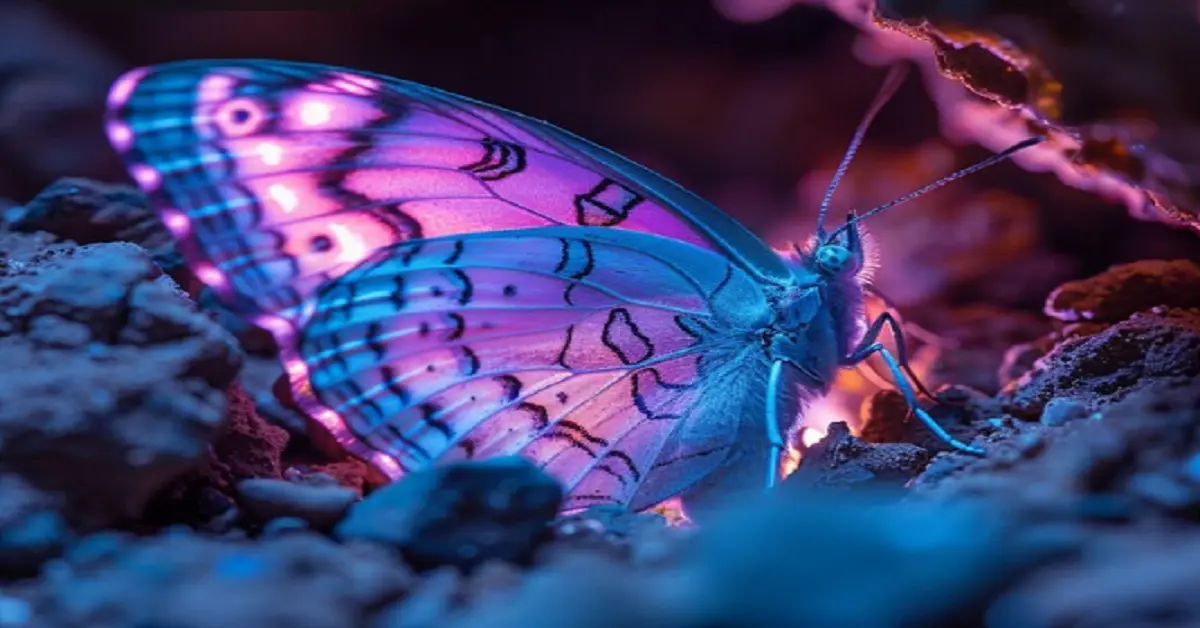The Fascinating World of Butterflies: A Deep Dive

Butterflies are more than just beautiful creatures fluttering around gardens and meadows. They play essential roles in our ecosystems and have captivated humans for centuries with their grace and elegance. In this article, we’ll explore the mesmerizing world of design:6ravuwsnreg= butterfly, delving into their anatomy, habitats, roles in nature, and how we can help protect them.
Understanding Butterflies
What are Butterflies?
Butterflies are insects from the order Lepidoptera, which also includes moths. Known for their vibrant wings and delicate flight, design:6ravuwsnreg= butterfly have fascinated people for centuries. These insects undergo a complete metamorphosis, transforming from egg to caterpillar, then to pupa, and finally into a butterfly.
Life Cycle of a Butterfly
Egg Stage
The life of a butterfly begins as a tiny egg, often laid on the leaves of plants that will later serve as food for the emerging caterpillar. These eggs are usually round or oval and can vary in color.
Caterpillar Stage
Once hatched, the caterpillar or larva begins its primary task: eating. Caterpillars can consume vast amounts of foliage, growing rapidly and shedding their skin multiple times as they expand.
Pupa Stage
After reaching a certain size, the caterpillar forms a pupa or chrysalis. This stage is a transformative period where the caterpillar’s body undergoes significant changes, eventually emerging as an adult butterfly.
Adult Butterfly Stage
The final stage is the adult butterfly. Upon emerging from the chrysalis, the design:6ravuwsnreg= butterfly must wait for its wings to dry before it can fly. Adult butterflies are primarily focused on reproduction and feeding on nectar.
Types of Butterflies
Common Butterfly Species
Around the world, numerous butterfly species can be easily spotted in gardens and parks. Some well-known species include the Monarch, Swallowtail, and Painted Lady.
Rare and Endangered Species
Many butterfly species are rare or endangered due to habitat loss, climate change, and other environmental pressures. Conservation efforts are crucial to preserving these delicate species.
Butterfly Anatomy
Wings
Structure and Function
Butterfly wings are composed of two layers covered in tiny scales that create their stunning colors and patterns. These wings allow butterflies to fly, mate, and escape predators.
Wing Patterns and Colors
The patterns and colors of design:6ravuwsnreg= butterfly wings can serve various purposes, from camouflage and warning signals to attracting mates. These intricate designs are a marvel of natural evolution.
Body
Head
The head of a butterfly houses its sensory organs, including antennae for detecting smells and compound eyes for a broad field of vision.
Thorax
The thorax is the midsection of the butterfly, where the wings and legs are attached. It’s a powerhouse for movement.
Abdomen
The abdomen contains the design:6ravuwsnreg= butterfly reproductive and digestive organs. It’s essential for the insect’s survival and reproduction.
Butterfly Habitats
Natural Habitats
Butterflies inhabit a range of environments, from tropical rainforests and meadows to deserts and wetlands. Each species has specific habitat requirements for feeding, mating, and laying eggs.
Importance of Habitats for Survival
A butterfly’s habitat is crucial for its life cycle. Loss of habitat due to human activities poses a significant threat to many species.
The Role of Butterflies in Ecosystems
Pollination
Butterflies are vital pollinators, helping plants reproduce by transferring pollen from one flower to another. This process is essential for many plants to produce fruits and seeds.
Food Source for Other Animals
Butterflies and their larvae are an important food source for birds, spiders, and other predators. They play a critical role in the food chain.
Indicator Species
Butterflies are considered indicator species because changes in their populations can signify broader environmental shifts. Their presence and health can provide insights into the state of ecosystems.
Butterfly Conservation Efforts
Threats to Butterfly Populations
Butterflies face numerous threats, including habitat destruction, pesticide use, climate change, and pollution. These factors contribute to declining populations worldwide.
Conservation Strategies
Efforts to conserve butterflies include habitat restoration, establishing butterfly reserves, and implementing policies to reduce pesticide use. Public education and involvement are also key components.
How to Help as an Individual
Individuals can aid butterfly conservation by planting native plants, reducing pesticide use, and supporting conservation organizations. Creating butterfly-friendly gardens is a practical step anyone can take.
Creating a Butterfly Garden
Choosing the Right Plants
Selecting native plants that provide nectar and larval food sources is crucial for attracting butterflies. Examples include milkweed for Monarchs and parsley for Swallowtails.
Designing Your Garden
A successful butterfly garden includes a variety of plants that bloom at different times, providing a continuous food source. Additionally, consider incorporating features like puddling areas and shelter from the wind.
Maintenance Tips
Maintaining a butterfly garden involves regular watering, avoiding pesticides, and removing invasive species. Creating a healthy environment encourages butterflies to thrive.
Butterflies and Human Culture
Symbolism and Myths
Butterflies have long been symbols of transformation, rebirth, and beauty in various cultures. They appear in myths, folklore, and religious texts worldwide.
Butterflies in Art and Literature
Artists and writers have been inspired by butterflies for centuries, incorporating their imagery into paintings, poems, and stories. Their delicate beauty and transformative life cycle make them powerful symbols.
Interesting Facts About Butterflies
Unique Behaviors
Butterflies exhibit fascinating behaviors, such as mud-puddling, where they gather on moist ground to extract minerals.
Migratory Patterns
Some design:6ravuwsnreg= butterflyspecies, like the Monarch, undertake incredible migrations, traveling thousands of miles between breeding and wintering grounds.
Survival Mechanisms
Design:6ravuwsnreg= butterfly have developed various survival mechanisms, including mimicry, camouflage, and toxic chemicals to deter predators.
Conclusion
Design:6ravuwsnreg= butterfly are more than just enchanting creatures; they are essential to our ecosystems and hold a special place in human culture. By understanding and protecting these insects, we contribute to the health of our environment and preserve the beauty they bring to our world.